By Jude Rogers.
15. Blue Lines.
The summer continues to smile on Southern England, forcing my size eights into my silvery sandals. This weekend, I head to Aldeburgh for my friend Kathryn’s hen – not a clucking celebration of pink veils and orange tans, but pink wine, dirty laughs and attempts to darken our strap-marks. We have a bright blue house on the seafront, a bright blue sea in front of our living room window, and shingle to lose ourselves in; lots of tiny round stones to kiss our heels and big toes.
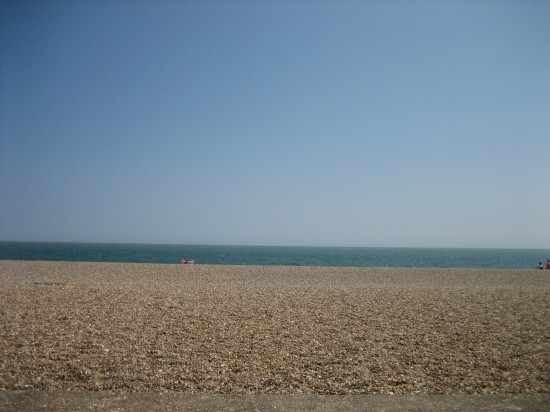
On Saturday morning, slightly tender, we head out into the glare, trying to see what virgin pleasures the coast can give us.
a. Aldeburgh is a lovely word, I think to myself, rolling it around my tongue like a lemonade lollipop. It means Old Fort, but much of this Tudor town, just like the villages that surround it, is now lost at sea. Dunwich to the north is meant to have a church that lives under the waves, its bells meant to chime along with the lull of the breeze. Today, however, this is hardly any noise at all. Although people swarm around like bees, all is wonderfully quiet, peaceful, peculiar.
b. In front of our house, there are a few strange structures. One is a viewing point, the colour of sand, licked with old paint. A dark stairwell spirals to the top and I wonder who goes there, what happens there. Another is white and candy-pink, a tiny narrow house sitting boldly by itself. A tiny tree sits outside it, and two chairs stacked on the balcony whisper to our bare legs.
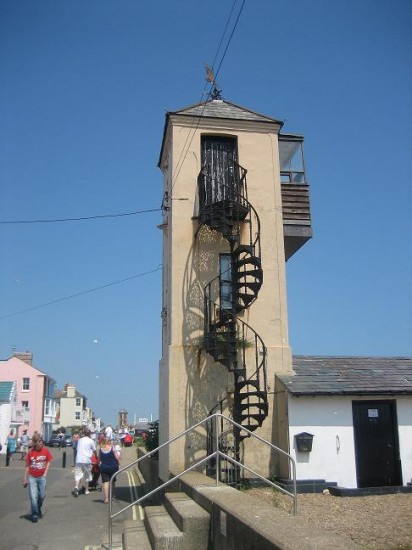
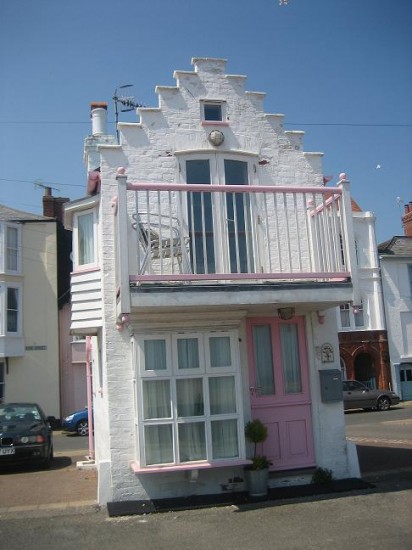
c. Along the beach, there are fishing huts, some of them offering us wares. I buy a tiny tub of cockles and think about the village next to mine in Wales, a marshy place called Penclawdd, which is where the Gower’s cockles come from. As a child, I loved to press my nose against the window of our little car as we drove past there to Crofty, watching the wild horses, trying to spot the old ladies with their groaning wicker baskets.
Here, there is no sign of hard work, only price-tags, pepper and vinegar, and signs that make me laugh as I tuck into my seafood.
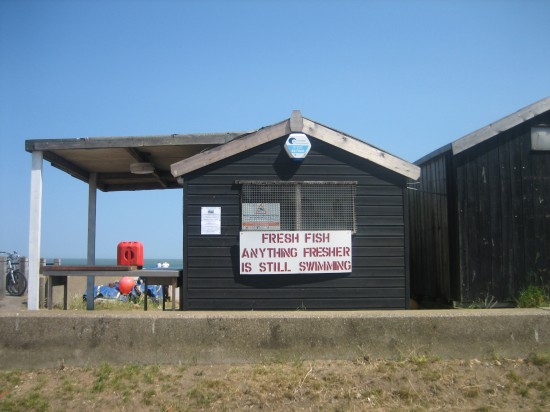
d. A little further on, we find the Moot Hall, a Tudor, timber-framed building where the local council still meet. It is so well-preserved it looks like a cartoon, but closer up, you see the lines, see the wear, see its age. I take a picture, and somehow, the sky looks deathly white. I try again; the same thing. Once again; no mistake. Slightly unnerved by the past, I put my camera in my pocket, tighten the straps on my Birkenstocks, take my fear to the shore.
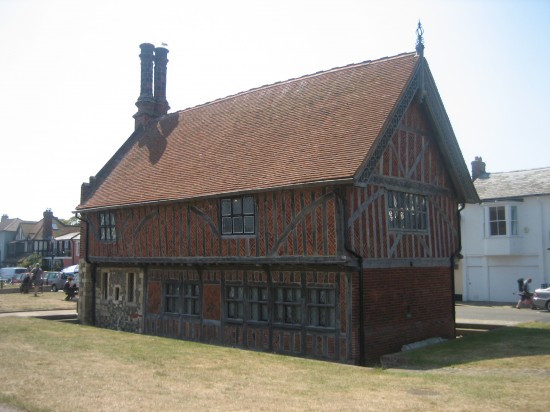
e. On the shingle, all is golden, and sultry, and lovely. Perfect pebbles get smaller as we walk towards the waves, but I am here for the Scallop that sits to the north of the stretch. This is a sculpture of two broken shells dedicated to Benjamin Britten, the composer who made Aldeburgh his home, scorched with words from his opera, Peter Grimes. “I hear those voices that will not be drowned,” it says, as it looks out to the blue, the letters cut out of the steel, their insides filled with the colours around them.
Against the sky, it looks beautiful, as if it will be here forever.
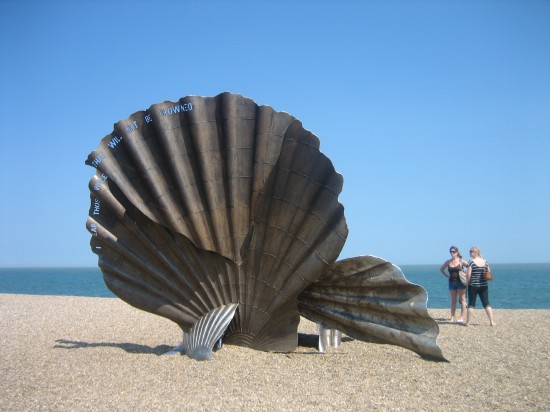
f. Walking back, the smell of salt, and of sun-cream, and our sherbet, as we walk by the tufts of grass that grow out of the stones. I’m always childishly happy to see these green blades, to think of them fighting their battle with the incoming tides. As I walk, I also see the pink and purple petals that blossom wildly by the sea-wall, and imagine Kathryn’s arms filled with flowers, as the seasons change in September, and she walks down the aisle. I carry on doing so as we wind slowly back to our home for the weekend, to our little corner of heaven, her place of hope for the future.